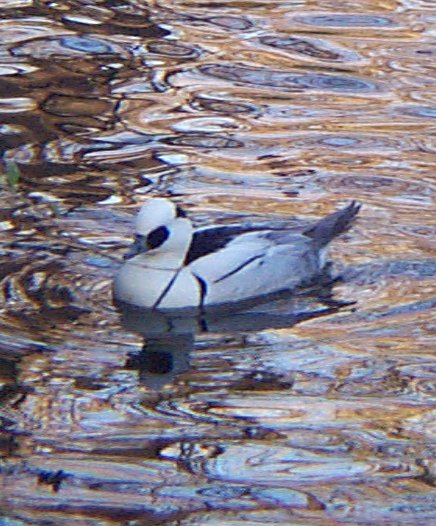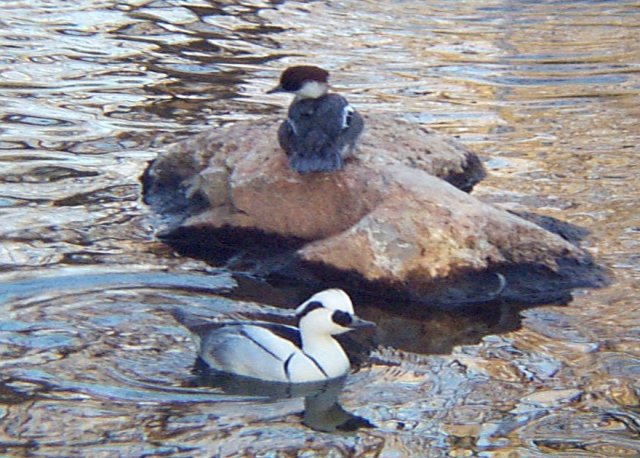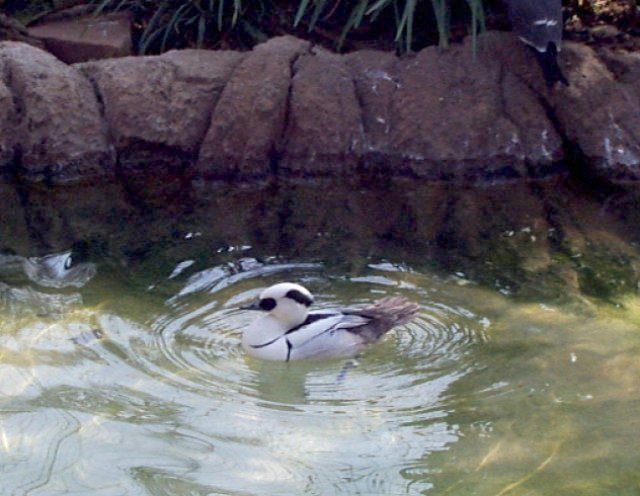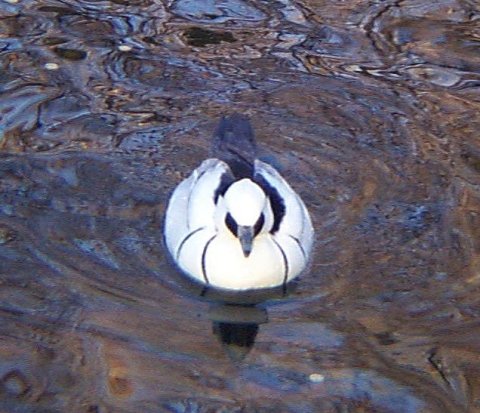 |
Common Name: Smew |
| Scientific name: Mergus albellus | |
| Range: England, Central Europe, Southern Russia to China and Japan. | |
| Habitat: During breeding Smews are located in small lakes and ponds. However, during the winters they are found in lakes, rivers, and estuaries. They also nest in holes in trees in the forest. | |
| Status: Stable, not threatened. | |
| Diet in the wild: Fish, insect larvae and shellfish. | |
| Diet in the zoo: Smew breeders use live food such as mealworms and minnows. | |
| Location in the zoo: Near the waterfowl area, close by the aquarium. |


